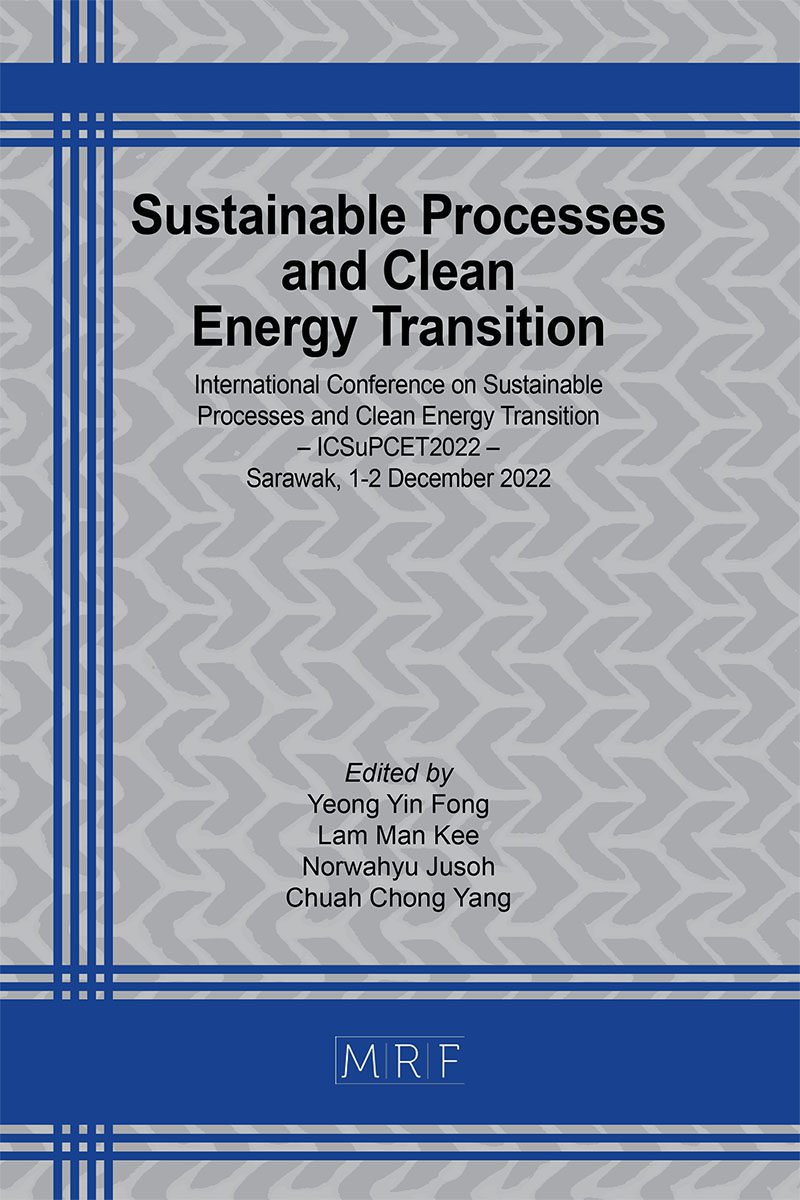Drying kinetics and statistical modeling of thin-layer drying of purple non-sulfur bacterial biomass
ASIFA Anwar, GORDON McKay, HAMISH Mackey
download PDFAbstract. Thin-layer drying studies have been done for various materials, including vegetables, fruit, grains, wood, plants, biomass, and others. The present study is concerned with the investigation of the drying kinetics of harvested photosynthetic non-sulfur bacteria (PNSB) biomass. Four different drying models, i.e., Logarithmic, Newton, Page, and Henderson and Pabis were fitted to the experimental data obtained from drying a thin-layer of biomass in a laboratory oven at 60, 80, 100, and 120 ℃. The results were assessed on statistical parameters such as the Akaike information criterion, and residual standard error. The results showed that Logarithmic model fitted the overall best for all the states of the thin layer at 60 ℃ and 80 ℃, while Page model gave the best fit for 100 ℃ and 120 ℃. The current research is aimed to study the drying behavior of the biomass and to aid in optimizing the drying procedure of the biomass.
Keywords
Biomass, Drying Kinetics, Modeling, Phototrophic Purple Bacteria, Thin-Layer Drying
Published online 5/20/2023, 5 pages
Copyright © 2023 by the author(s)
Published under license by Materials Research Forum LLC., Millersville PA, USA
Citation: ASIFA Anwar, GORDON McKay, HAMISH Mackey, Drying kinetics and statistical modeling of thin-layer drying of purple non-sulfur bacterial biomass, Materials Research Proceedings, Vol. 29, pp 425-429, 2023
DOI: https://doi.org/10.21741/9781644902516-48
The article was published as article 48 of the book Sustainable Processes and Clean Energy Transition
![]() Content from this work may be used under the terms of the Creative Commons Attribution 3.0 license. Any further distribution of this work must maintain attribution to the author(s) and the title of the work, journal citation and DOI.
Content from this work may be used under the terms of the Creative Commons Attribution 3.0 license. Any further distribution of this work must maintain attribution to the author(s) and the title of the work, journal citation and DOI.
References
[1] M. Adedayo, E. Ajiboye, J. Akintunde, and A. Odaibo, “Single cell proteins: as nutritional enhancer,” Adv Appl Sci Res, vol. 2, no. 5, pp. 396-409, 2011.
[2] I. Doymaz and M. Pala, “The thin-layer drying characteristics of corn,” Journal of food engineering, vol. 60, no. 2, pp. 125-130, 2003. https://doi.org/10.1016/S0260-8774(03)00025-6
[3] S. Huang et al., “Spray drying of probiotics and other food-grade bacteria: A review,” Trends in food science & technology, vol. 63, pp. 1-17, 2017. https://doi.org/10.1016/j.tifs.2017.02.007
[4] A. R. Celma, F. Cuadros, and F. López-Rodríguez, “Convective drying characteristics of sludge from treatment plants in tomato processing industries,” Food and Bioproducts Processing, vol. 90, no. 2, pp. 224-234, 2012. https://doi.org/10.1016/j.fbp.2011.04.003
[5] D. A. Kenny, “Measuring model fit,” ed, 2015.
[6] D. Jung, S. Couturier, J. Pannejon, J. Jossent, and D. Chenu, “A Solar Sludge Drying Model: Study of Drying Phenomena—Validation of an Industrial Solar Dryer,” Optimization of a Rapid DNA Extraction and Purification Protocol for Wastewater Biosolids. p. 17, 2013.
[7] A. R. C. Villagracia et al., “Microwave drying characteristics of microalgae (Chlorella vulgaris) for biofuel production,” Clean technologies and environmental policy, vol. 18, no. 8, pp. 2441-2451, 2016. https://doi.org/10.1007/s10098-016-1169-0
[8] I. Doymaz, “Air-drying characteristics of tomatoes,” Journal of Food engineering, vol. 78, no. 4, pp. 1291-1297, 2007. https://doi.org/10.1016/j.jfoodeng.2005.12.047
[9] İ. Doymaz, “Evaluation of mathematical models for prediction of thin-layer drying of banana slices,” International Journal of Food Properties, vol. 13, no. 3, pp. 486-497, 2010. https://doi.org/10.1080/10942910802650424
[10] O. Y. Turan and E. Fıratlıgil, “Modelling and characteristics of thin layer convective air-drying of thyme (Thymus vulgaris) leaves,” Czech Journal of Food Sciences, vol. 37, no. 2, pp. 128-134, 2019. https://doi.org/10.17221/243/2017-CJFS































